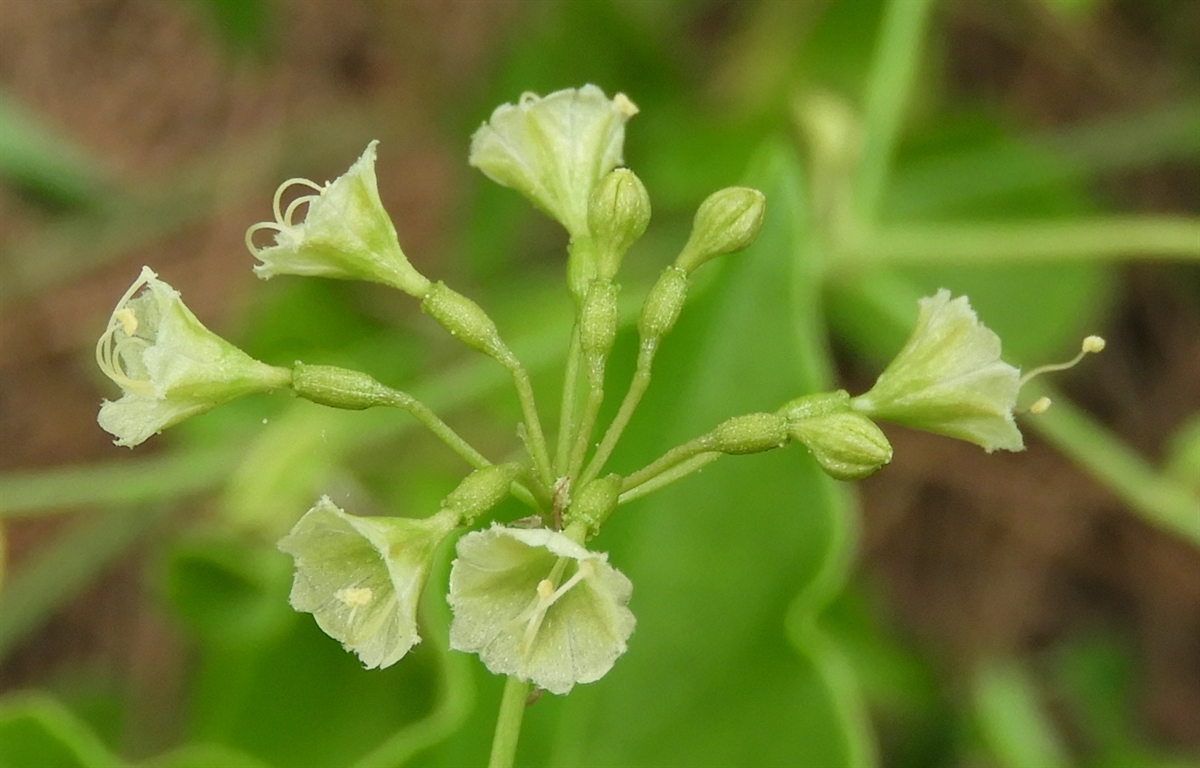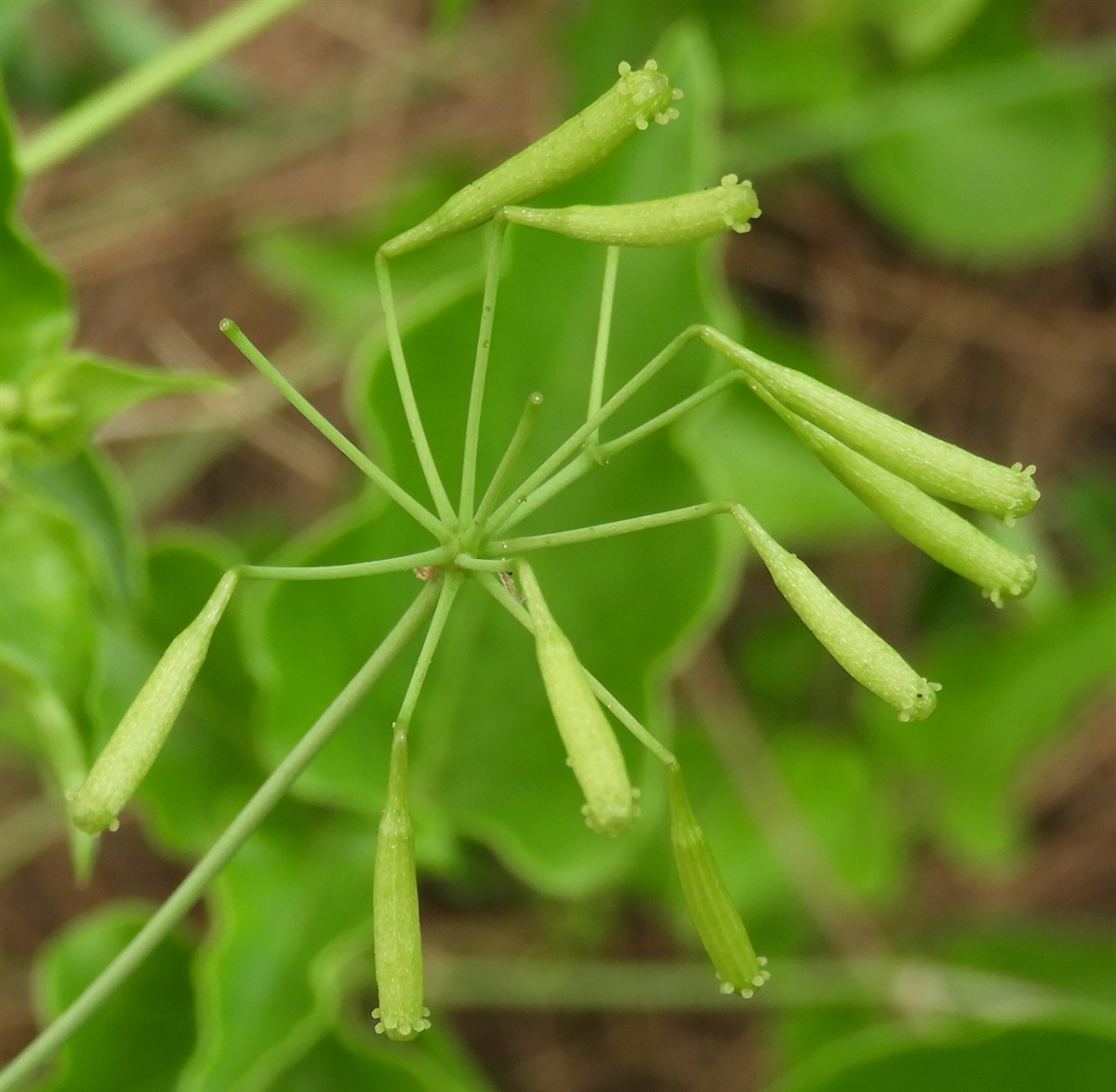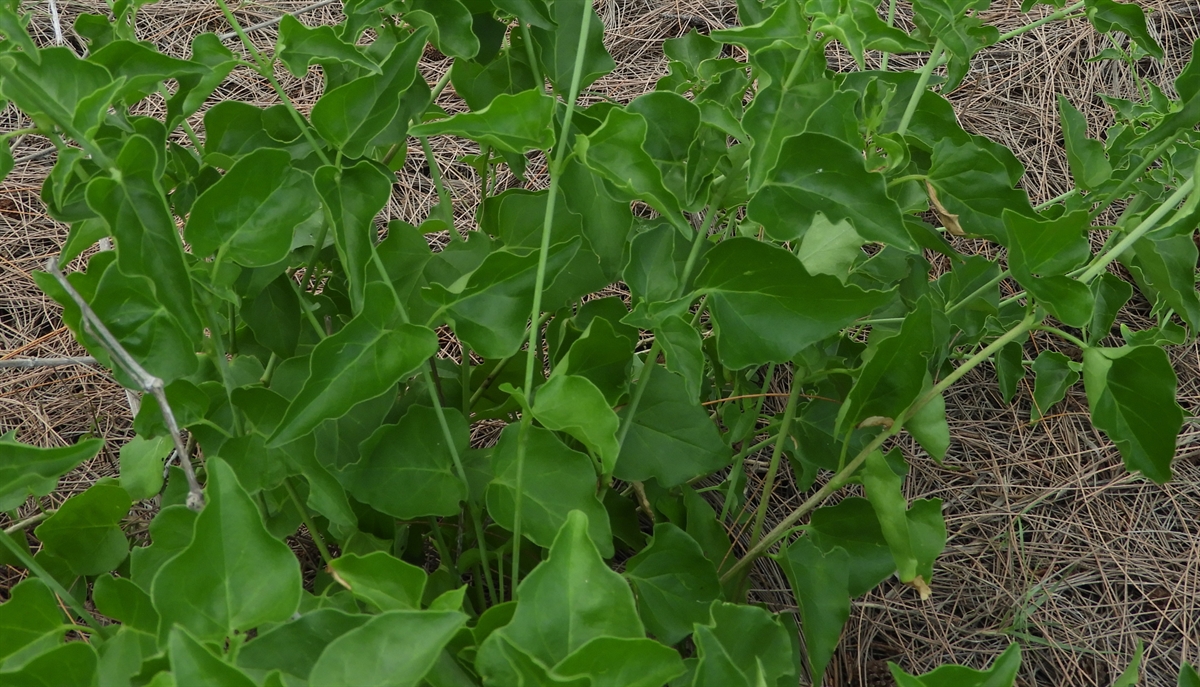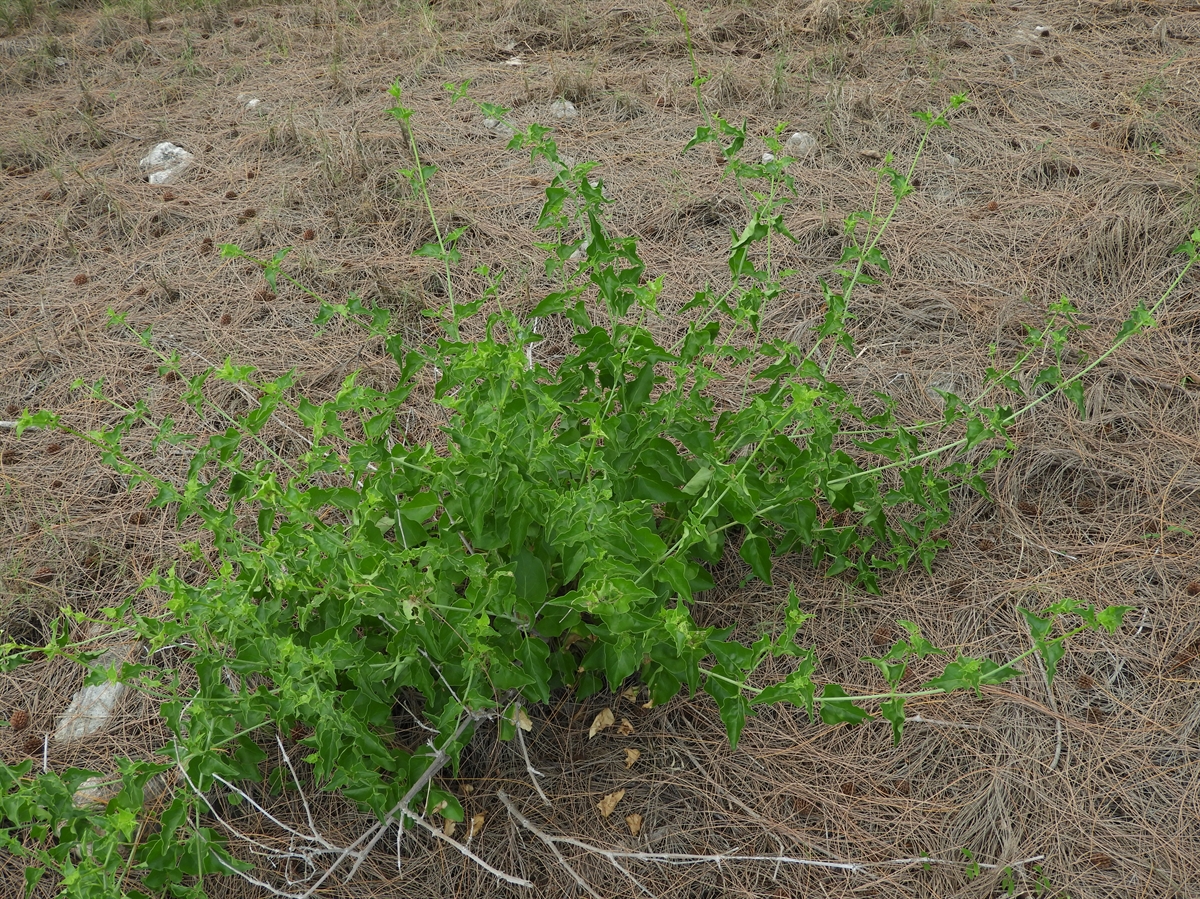Habit: Boerhavia scandens grows as a decumbent perennial herb, with ascending inflorescences, spreading outward up to 4 m and often climbing on other vegetation. The leaves are arranged oppositely, ovate to cordate, to 6 cm in length, with a sinuate leaf margin and an acute/acuminate/obtuse leaf apex.
The incomplete, perfect, actinomorphic flowers are arranged in umbels. The calyx has 5, fused into a cup, sepals that are white. There are no petals. There are 2-3 stamens. The ovary is superior with 1 locules and ovule. The fruit is a 5 ribbed achene that is retained within the glandular calyx at maturity (anthocarp).
Habitat: Boerhavia scandens grows in sandy Human Altered environments (yards, abandoned fields, roadsides) and the edges of Dry Broadleaf Evergreen Formations – Forests/Shrublands.
Distribution: Boerhavia scandens occurs throughout the entire Lucayan Archipelago, the Caribbean region, Central and northern South America and parts of the southern United States.
Medicinal/Cultural/Economic usage: Boerhavia scandens is used medicinally in the Lucayan Archipelago to treat colds and flu and other respiratory problems.



